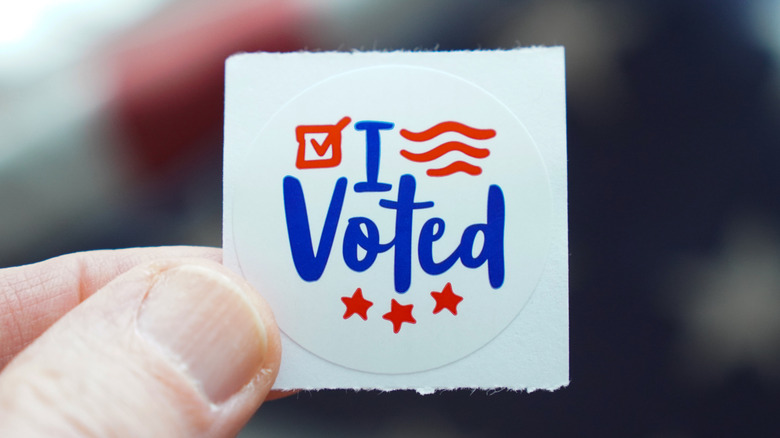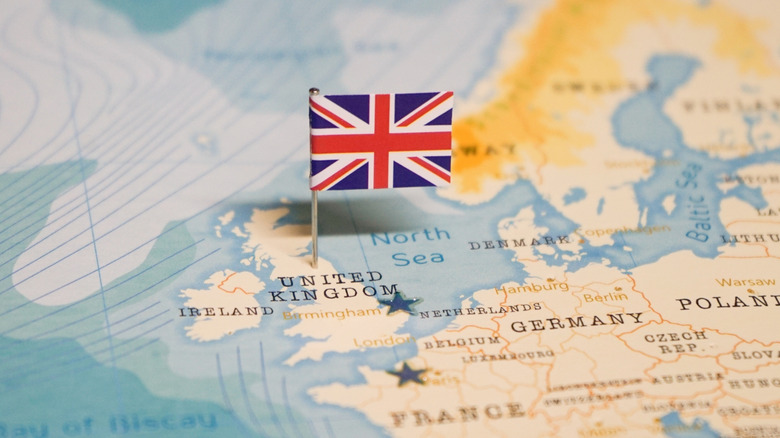Why Are Massachusetts And Only 3 Other States Called Commonwealths?
Quick question: What do Massachusetts, Pennsylvania, Kentucky, and Virginia have in common? If you guessed "They are all states" or "They all have Walmarts," then congratulations: You're correct. But more than that, Massachusetts, Pennsylvania, Kentucky, and Virginia belong to a little club that shares a title that you might have heard: commonwealth. Some might recognize the term "commonwealth" as somehow related to the United Kingdom, but the four U.S. states in question have nothing to do with that kind of commonwealth. Also, those four states don't have any special kind of status. They're just regular states, one of which has extra clam chowder. In the end, "commonwealth" is currently a symbolic name meaning citizen-elected governmental body. So, a state.
In fact, the states in question are officially the Commonwealth of Massachusetts, the Commonwealth of Pennsylvania, the Commonwealth of Virginia, and the Commonwealth of Kentucky, no matter that those names are too long to use on an everyday basis. These longer, official names date back to the states' founding. On the Massachusetts state website, for instance, the 1780-enacted Massachusetts Constitution describes itself as a, "free, sovereign, and independent body politic, or state by the name of The Commonwealth of Massachusetts."
Legislators of the time were using a popular term — commonwealth — that came into use in 1649 following the execution of King Charles I, a disastrous British ruler who led Great Britain into civil war. After this, Great Britain was declared a "commonwealth" without a king, ruled jointly by England, Scotland, and Ireland (which only lasted until 1660). Calling a state a "commonwealth" referenced that period of citizen-led government.
A 17th-century term meaning citizen-led government
To understand why the founders of Massachusetts, Pennsylvania, Kentucky, and Virginia explicitly said in their constitutions that they are "commonwealths," we've got to put ourselves in the position of the late 18th-century people of the time. They lived in a world with no Bill of Rights or guaranteed freedoms, no assumptions about democratic participation in government, no widespread and global electoral systems, and only the beginnings of the collective United States, a new country populated with separate, individual, former British colonies that decided to band together under one, single government. In that environment, how does a state assert its will to self-govern? How does it make it clear that it's run by the people? Easy: It calls itself a commonwealth.
In order, Pennsylvania, Massachusetts, Virginia, and Kentucky were the second (1787), sixth (1788), tenth (1788), and fifteenth (1792) states to join the very risky governmental experiment of the United States. They all drafted their constitutions around this time, asynchronous with their admission to the American Union. Virginia paved the way in 1776, followed by Pennsylvania that same year, Massachusetts in 1780, and Kentucky in 1792.
All of these states defined themselves as commonwealths in their constitutions, which is why they carry names like "Commonwealth of Virginia" into the present. As mentioned, the term "commonwealth" references the period of time in British history we described earlier following the execution of King Charles I. And even though England reinstituted its monarchy in 1660, a mere 11 years after abolishing it in 1649, the vision of people-led government held. It's this vision to which Massachusetts, Pennsylvania, Kentucky, and Virginia aspired.
Commonwealths in the US vs. the current British Commonwealth
Modernly, the word "commonwealth" usually references the current British Commonwealth. The Commonwealth is essentially an outgrowth of the old, now-defunct British empire and is composed of former colonies. More of an informal, polite political alliance than anything, this commonwealth consists of 56 countries and about 2.7 billion people, with Gabon and Togo being the most recent additions in 2022. As the Commonwealth says, their stated goal is, "the development of free and democratic societies and the promotion of peace and prosperity to improve the lives of all Commonwealth citizens." It reads well, no matter how vague.
This commonwealth, however — consisting of countries ranging from South Africa to Singapore, Jamaica to Malta, and Canada to Zambia — has nothing to do with the U.S. states of Massachusetts, Pennsylvania, Kentucky, and Virginia labeling themselves "commonwealths." But, both types of commonwealths share a common origin in Britain's brief stab at a non-monarchical government from 1649 to 1660. The four U.S. states borrowed the term for a collective group of self-governed people from that time, and so did the 1926 Imperial Conference.
At that conference, the British "dominions" — as they were called — of Australia, Canada, India, the Irish Free State, Newfoundland, New Zealand, and South Africa declared themselves separate from their mother kingdom, the U.K., but still loyal to the crown. New Zealand didn't become independent until 1947, for example, and Canada only shockingly recently in 1982. But, it was the Imperial Conference that laid the foundations for the modern-day British Commonwealth. But by then, states like Virginia had been calling themselves commonwealths for about 150 years.


